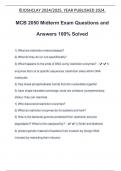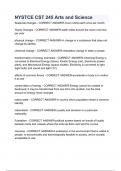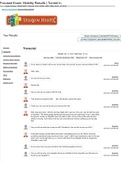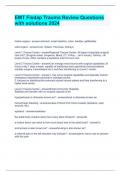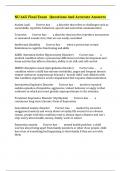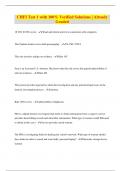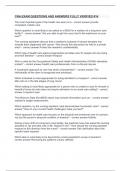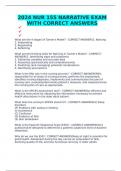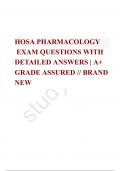Exam (elaborations)
MCB 2050 Midterm Exam Questions and Answers 100% Solved
- Course
- Institution
MCB 2050 Midterm Exam Questions and Answers 100% Solved 1) What are restriction endonucleases? 2) What do they do (or cut) specificically? 3) What happens to the ends of DNA cut by restriction enzymes? - 1) enzymes that cut at specific sequences (restriction sites) within DNA molecules 2) th...
[Show more]
